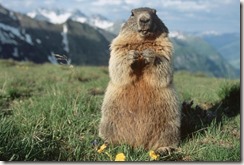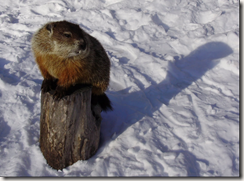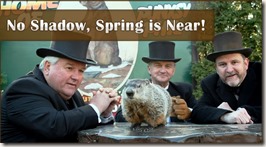That’s right!! You still get two more weeks to come out of hibernation and
enter Boston Biennial IV. In the tradition of Groundhog’s day, we looked at
our shadows and we have extended the deadline to February 15!!
The Biennial Project, the collaborative bringing you Boston Biennial IV,
loves a holiday!! One of our very favorites is Groundhog’s Day. Here in the
USA we have a tradition called Groundhog Day celebrated each year on February
2. According to folklore, if it is cloudy when a groundhog emerges from its
burrow on this day, then spring will come early; if it is sunny, the
groundhog will see its shadow and retreat back into its burrow, and the
winter weather will persist for six more weeks.
Well, we decided to beat that whistelpig or woodchuck to the punch and look
at our own shadow on this sunny Boston winter day. Instead of extending
winter for 6 weeks we are simply extending the deadline of Boston
Biennial IV for 2 weeks and a day.


The new deadline is now FEBRUARY 15, 2016 to enter BOSTON BIENNIAL IV.
If you enter today you might be featured in our entrant of the day email
blast and Facebook postings.
So appreciate the sunshine in winter and wake up after a long deep slumber -
Enter BOSTON BIENNIAL IV!! Don’t let winter get the better of you!!
For more information about Boston Biennial IV and how to enter click and
submit your work simply go to
http://the-biennial-project.com/BB2016_Intro.aspx


Why The Biennial Project and the Groundhog?
-Well we are both cute.
-Also did you know that the Groundhog, otherwise known by its scientific name
of Marmota monax eats 1/3 of its weight each day in vegetation. That
would make The Biennial Project’s Dr’s happy.
-Although groundhogs are considered herbivores, they sometimes eat insects.
They like apples, peas, dandelions and bark. The Biennial Project likes peas a
lot and have been known to eat bark.
-Groundhogs are diurnal (active during the day) from spring to fall. Most
activity occurs during the early morning and early evening hours, at which time groundhogs emerge from their burrows to gather food. The Biennial Project
gathers food, lots and lots of food gathering.
-Groundhogs are true hibernators, entering a deep sleep in October and
emerging in early spring. The Biennial Project attempts to do this every
winter.
-During hibernation, a groundhog's temperature drops from 99° F to 40° F, and
its heartbeat slows from 80 beats per minute to 5. During this time,
groundhogs survive on the fat reserves that they accumulate from their hefty
summer and fall diets. Well, The Biennial Project certainly has the fat
reserves.
-Mating season begins in early spring, once groundhogs emerge from
hibernation. Mothers give birth to 2-4 kits, and these baby woodchucks
remain with the mother for 2 months before becoming independent. The
Biennial Project might not give birth but we attempt to mate and we have
dogs.
-Groundhogs, with their long, sharp claws, dig complex
multi-chamber burrows that they use for hoarding food, nesting and
hibernating. The Biennial Project likes building forts also.
-Groundhogs are mostly solitary animals, only seeking out other groundhogs to
mate. However as a species, they work to protect each other. For example,
they communicate with one another using high-pitched shrills to warn each
other of approaching threats. High pitched shills, well we got that covered.
We also got your back!!
So remember to enter Boston Biennial IV!!!
http://the-biennial-project.com/BB2016_Intro.aspx

